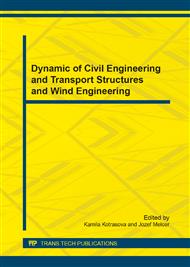p.100
p.104
p.110
p.116
p.120
p.124
p.130
p.136
p.142
Monitoring of Tram Traffic Noise in the Small Curve Radius
Abstract:
An excessive noise exposure not only decreases work quality and productivity, it also negatively affects human health. The most accurate data on noise levels can be obtained by measurements; however this approach is really time-consuming and its application is sometimes rather complicated. More frequently, calculation methods are used. The design methodology suggested by Liberko has been used for the calculations in Slovakia since 1991 [1]. As has been proved by experience, there is a need to re-evaluate some parts of the Slovak calculation methods and extend the number of initial parameters, so that much higher accuracy could be achieved. The layout (or the location) of the railway line is one of the parameters that at all events influence the level of noise caused by tramway transport. Providing that the ride of the tramway car is ideally straight in line, the forces that develop in a curve influence the acoustic situation in the vicinity of a moving tramway car. As this parameter has not yet been taken into account in calculations, the paper presented analyses the grounds for its use in noise prognoses.
Info:
Periodical:
Pages:
120-123
Citation:
Online since:
August 2014
Authors:
Price:
Сopyright:
© 2014 Trans Tech Publications Ltd. All Rights Reserved
Share:
Citation:


